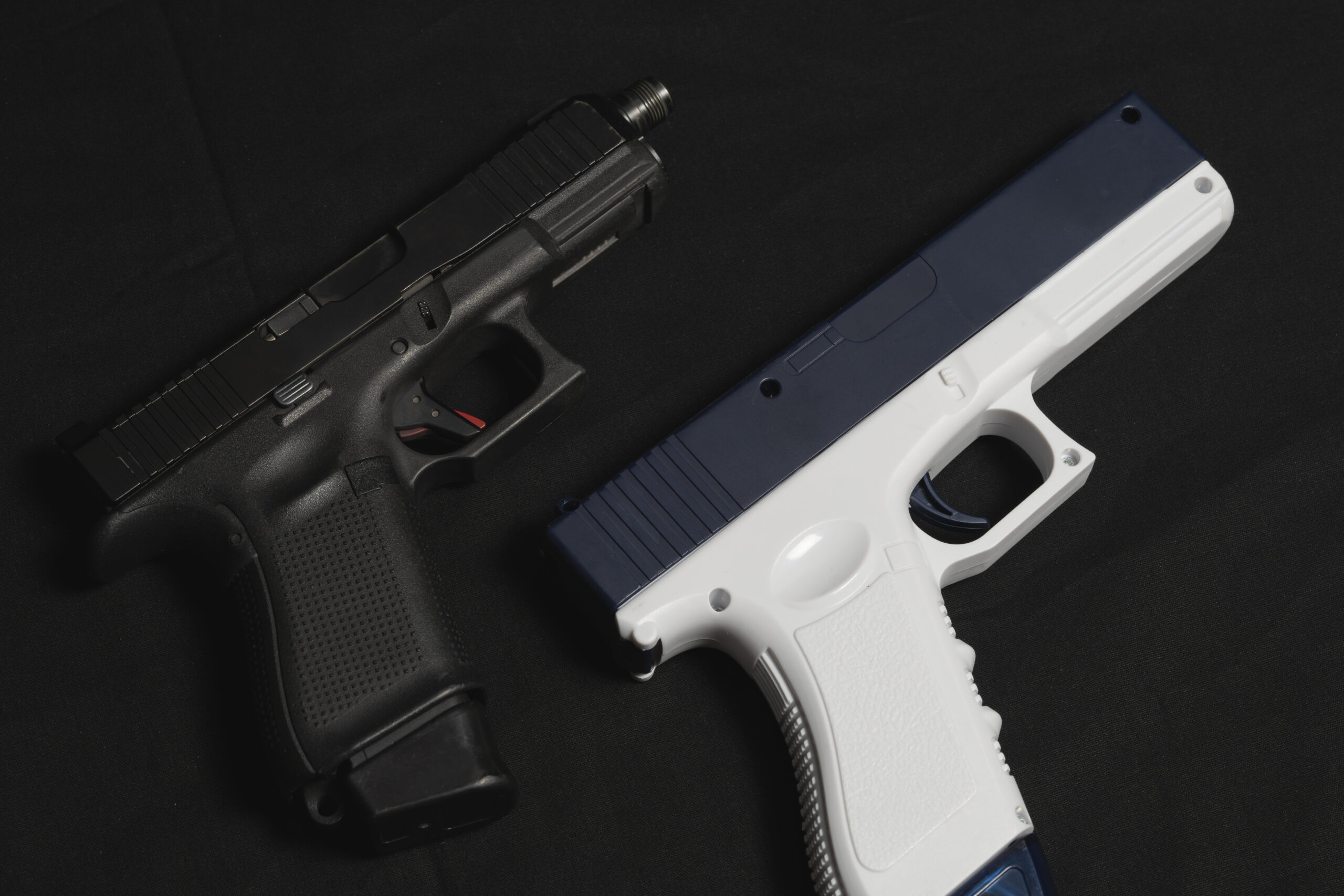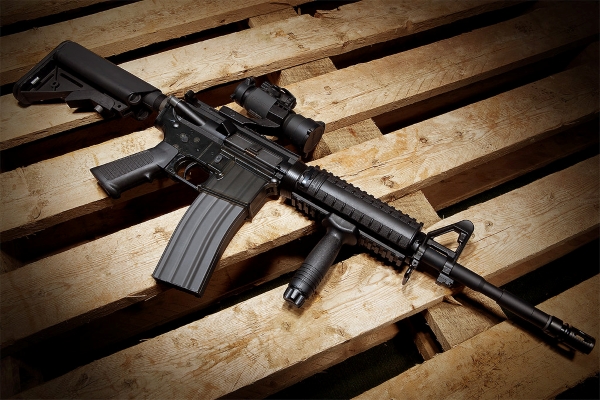In the world of firearm freedom, few topics stir up more buzz—or bureaucratic overreach—than 80% lower receivers, or as the left calls them, “Ghost Guns.” These unfinished firearm components have become the focal point of a relentless push by anti-gun politicians and federal agencies to choke out your God-given rights. But let’s get one thing straight: owning and manufacturing your own firearm is as American as it gets.
This guide breaks down precisely what 80% lowers are, how they work, where the law currently stands (including the Bondi v. VanDerStok Supreme Court case), and how you can stay informed, safe, and armed.
Disclaimer: The information provided in this article is for informational and educational purposes only. Nothing herein should be construed as legal advice. Laws and regulations regarding firearms and firearm accessories vary by jurisdiction and are subject to change.
The National Association for Gun Rights (NAGR) does not provide legal advice. If you have legal questions or concerns regarding firearm ownership, modifications, or usage, you should consult with a qualified attorney who is familiar with the applicable laws in your area.
This article was written and has not been updated since Thursday, March 27, 2025.
What is an 80% Lower Receiver?
An 80% lower receiver is a partially completed firearm receiver that requires further machining to be considered a functioning firearm under federal law. In other words, it’s a chunk of aluminum or polymer that—on its own—can’t shoot, can’t chamber a round, and can’t be regulated as a firearm. It’s not until you complete it using specific tools and skills that it crosses the legal line into becoming a firearm.
This isn’t some kind of loophole or gray area—it’s the law. The Bureau of Alcohol, Tobacco, Firearms and Explosives (ATF) has long recognized that unfinished receivers are not legally firearms, so long as they aren’t completed past a certain point.
Legal Framework and Definitions
The Gun Control Act of 1968 (GCA) regulates the sale, manufacturing, and transfer of firearms. Under 18 U.S.C. §921(a)(3), the term “firearm” includes any weapon that is designed to or may readily be converted to expel a projectile by the action of an explosive—and also includes the frame or receiver of such a weapon.
That definition clearly excluded unfinished receivers and parts kits lacking core functionality for decades. That’s why Americans could lawfully buy and finish 80% lower receiver kits at home—because those products were not considered firearms. They lacked the critical features necessary for immediate use and required further machining or assembly.
However, in 2022, the Bureau of Alcohol, Tobacco, Firearms and Explosives (ATF) rewrote the rules. The ATF claimed that many “weapon parts kits” and unfinished “frames or receivers” now met the definition of a firearm—despite being unable to fire a round and longstanding precedent to the contrary.
This power grab was challenged in federal court, leading to the landmark Supreme Court case Bondi v. VanDerStok (2025).
The Supreme Court Ruling: Bondi v. VanDerStok
In a 7–2 decision authored by Justice Neil Gorsuch, the U.S. Supreme Court upheld the ATF’s authority in limited scope. The Court ruled that the ATF’s regulation was not facially invalid, meaning the law could apply to some kits and some unfinished receivers that are readily convertible into functional firearms. The Court emphasized that products like Polymer80’s “Buy Build Shoot” kits—which can be turned into a working gun in a few hours with around-the-house tools—may qualify as firearms under federal law.
However, the ruling did not give ATF blanket authority to redefine all unfinished parts as firearms. The decision doesn’t mean that every 80% lower is now a firearm. In fact, the Court warned that many products are too incomplete to fall under the GCA. Whether a specific item qualifies still depends on its individual characteristics—how complete it is, what tools are required, and how quickly it can be converted.
This is not a green light for mass regulation—it’s a warning shot that courts should evaluate these cases based on facts, not bureaucratic fiat.
So what does this mean for gun owners?
- 80% lower receiver parts kits are still illegal without a serial number. Although the VanDerStok ruling pointed out that not all receiver parts kits qualify as “weapons,” the ruling did not strike down the ATF rule, which remains in effect today. While many kits should adequately fall outside the ATF’s scope—especially those not readily convertible – they remain subject to the ATF rule until each one has been separately litigated or the ATF rule withdrawn.
- ATF does not have unlimited power. The Court flatly rejected a “one-size-fits-all” interpretation, leaving the door wide open for future challenges of the rule or of the legal status of individual kits.
- Legal ambiguity remains. Because this ruling rejected only a facial challenge, future as-applied challenges are likely—and necessary.
Federal law still allows you to build your own firearm for personal use—without a serial number or registration—so long as you’re not prohibited from owning guns and you don’t sell or transfer the completed firearm to an FFL or across state lines. The ATF rule does not require gun owners to serialize their own firearms, and it does not prohibit individual private sales of unserialized firearms to other in-state individuals (consistent with all applicable federal and state laws).
But it’s a legal minefield. And states are making it worse.
California, Colorado, Connecticut, Delaware,Hawaii, Illinois, Maryland, Massachusetts, Nevada, New Jersey, New York, Oregon, Rhode Island, Vermont, Washington, and the District of Columbia have all imposed laws banning or heavily regulating 80% lowers and homemade guns. These state laws vary wildly and are frequently challenged in court, but you need to check local regulations before you buy, build, machine, or sell any components.
(See the legal disclaimer at the end of this article for more.)
Understanding the Manufacturing Process
An 80% lower requires some essential equipment to become a working lower receiver. This typically includes a jig, a drill press or CNC machine, and attention to detail.
Let’s be clear—this isn’t “printing a ghost gun in your basement” like the media wants you to believe. It takes work, time, and skill. The remaining 20% involves milling out the fire control cavity, trigger slot, and holes for the hammer and trigger pins.
And despite the anti-gun hysteria, none of this magically makes a criminal out of the average American. These are your rights. Exercise them responsibly.
Modern Manufacturing Technologies
Technology marches on, and so does freedom.
Today, you don’t just need traditional tools to finish an 80% lower. 3D printing has entered the chat. Polymer 80% frames for pistols and printed receivers are now part of the conversation—and the ATF is panicking.
Whether you’re using a CNC machine or a 3D printer, the point remains the same: the Second Amendment wasn’t written with limitations on how a firearm is made. Freedom evolves. And we’re here for it.
Safety and Compliance
While freedom is paramount, responsibility goes hand-in-hand. If you’re building your own firearm, you should know what you’re doing.
- Always follow firearm safety best practices: Firearm Safety.
- Don’t skip out on understanding your local and state laws.
- Don’t build if you’re prohibited from owning a gun.
- Don’t sell or distribute unless you’re a licensed manufacturer.
Be smart. Be skilled. Be safe.
Bondi v. VanDerStok: A Supreme Setback
In March 2025, the Supreme Court issued a landmark decision in Bondi v. VanDerStok—but not in the way many gun owners were hoping. Let’s clear the air.
This was a case about whether the Bureau of Alcohol, Tobacco, Firearms and Explosives (ATF) had the authority to redefine the term “firearm” under the Gun Control Act (GCA) to include unfinished frames and receivers—commonly referred to as 80% lowers—as well as “weapon parts kits” that can be readily assembled into functioning firearms.
Gun rights advocates argued that the ATF went way beyond the law, trying to criminalize unserialized unfinished parts without Congressional approval. The lower courts agreed, striking down the ATF rule.
But the Supreme Court reversed that decision.
Here’s what they actually held:
- The ATF rule is not facially invalid—meaning the Court didn’t say it was unconstitutional in all cases. In fact, the Court explicitly ruled that some weapon parts kits and partially finished frames and receivers can be regulated under the GCA.
- Using the Polymer80 “Buy Build Shoot” kit as an example, the Court said that because it comes with all the parts to build a functioning firearm and can be completed in minutes using common tools, it meets the statutory definition of a “weapon” that is “readily convertible” into a gun.
- The Court said the terms “frame” and “receiver” could apply to unfinished parts if their intended function is clear and they’re easily completed.
- Importantly, not all 80% lowers or kits are automatically firearms under the Supreme Court’s VanDerStok ruling, although most are under the ATF rule it upheld. But if they’re nearly complete or come with clear instructions and jigs to make completion easy, the Supreme Court affirmed that the ATF is operating within its statutory powers to regulate them.
In short, the Supreme Court did not throw out the ATF’s rule. They said it could be applied lawfully to some 80% lowers and kits—and left the door open for future challenges on a case-by-case basis. The Court did not endorse a blanket ban, but didn’t protect all unfinished parts either.
Let’s be real: This was a loss for gun rights.
The ATF now has the green light to go after a huge chunk of the homebuilt firearm market—especially products that are “readily convertible” into working guns. The fight isn’t over, but we’re now battling on harder terrain.
That’s why groups like the National Association for Gun Rights are so critical. We’re not just fighting battles in the courts—we’re making noise, educating the public, and pressuring Congress to stop bureaucrats from twisting the law to disarm the people.
It is important to note that this rule did not touch the private 3D printing of firearms, as this ATF rule focused on kits.
Frequently Asked Questions (FAQs)
What defines an 80% lower receiver?
The original point of an 80% lower receiver is a firearm receiver that is not yet legally considered a firearm because it hasn’t been completed to the point where it can function. It lacks the necessary cavities, pin holes, and slots to house fire control components.
However, the entire point of the ATF rule is that incomplete frames or receivers are now considered firearms subject to regulation (including serialization requirements).
From the rule: “The terms ‘frame’ and ‘receiver’ shall include a partially complete, disassembled, or nonfunctional frame or receiver, including a frame or receiver parts kit, that is designed to or may readily be completed…”
What are the legal requirements for ownership?
When reading federal law, no background check, serial number, or registration is required to buy or own an 80% lower—yet. But state laws vary. Some states classify them as firearms and restrict them accordingly.
However, the ATF has used its rule-making ability to force regulation. As a general rule, if it’s recognizable as an 80% lower, it’s subject to the same regulations as a completed firearm, including serialization.
From the rule: “The terms ‘frame’ and ‘receiver’ shall include a partially complete, disassembled, or nonfunctional frame or receiver…the terms shall not include a forging, casting, printing, extrusion, unmachined body, or similar article that has not yet reached a stage of manufacture where it is clearly identifiable as an unfinished component part of a weapon (e.g., unformed block of metal, liquid polymer, or other raw material).
Always check your local laws.
How do manufacturing methods differ?
Traditionally, 80% lowers were completed with a jig and drill press. Today, CNC milling and 3D printing offer faster, more precise options. There’s no prohibition in this rule on 3D printing your own; you don’t even have to have it serialized.
HOWEVER, manufacturers and FFLs are in very different boats. While there’s some squish and discretion on what is considered a firearm depending on the part or the kit, the general rule appears to be that no manufacturer or FFL can sell you an unserialized receiver or kit–unless it was made before October 22, 1968.
Additionally, if you take an unserialized firearm into a gunsmith for repair, that gunsmith is required by the rule to serialize it before they return it to the original owner.
What documentation is required?
If you’re building for personal use, there is no required federal documentation—yet. However, best practices include keeping receipts, documenting your build, and understanding the law. If you ever plan to sell, you’ll need to serialize and follow ATF manufacturing laws. However, this is not true if your state does not have private sale bans, in which case you could transfer the firearm in a person-to-person sale without a serial number.
How do state laws vary?
It’s a patchwork. States like California, New York, and New Jersey have clamped down. Others—like Texas, Florida, and Arizona—still uphold freedom. Research your state’s stance before you build, buy, or print.
——————-
Conclusion: Why 80% Lowers Still Matter—Even After the Supreme Court’s Decision
The battle over 80% lowers isn’t just about firearm parts—it’s about who controls your rights: you, or unelected bureaucrats at the ATF.
The Supreme Court’s recent decision in Bondi v. VanDerStok didn’t give the ATF a blank check—but it also didn’t stop them. In fact, the Court ruled that some unfinished receivers and parts kits—especially those that are easily completed with common tools—can be regulated under the Gun Control Act.
That means the ATF has been given the green light to continue its war on homemade firearms. It’s not the total defeat we feared—but it’s not the victory we needed.
This decision proves what we’ve known all along: the courts won’t save us. If you care about the right to build your own firearms—without being treated like a criminal—it’s going to take grassroots activism and legislative pressure to rein in these unelected tyrants.
Now is not the time to sit back. Now is the time to double down.
Become a member of the National Association for Gun Rights
The right to keep and bear arms doesn’t stop at the gun store counter. It includes the right to make your own. And we’re not backing down.
Want to know your rights and stay informed? Read more:
Disclaimer: The information provided in this article is for informational and educational purposes only. Nothing herein should be construed as legal advice. Laws and regulations regarding firearms and firearm accessories vary by jurisdiction and are subject to change.
The National Association for Gun Rights (NAGR) does not provide legal advice. If you have legal questions or concerns regarding firearm ownership, modifications, or usage, you should consult with a qualified attorney who is familiar with the applicable laws in your area.
This article was written and has not been updated since Thursday, March 27, 2025.
About the Author
Taylor Rhodes is the Director of Communications at the National Association for Gun Rights. A seasoned political strategist and unapologetic defender of the Second Amendment, Taylor has led high-impact campaigns at both the state and national levels. He lives in Hoover, Alabama with his wife, Madison, and enjoys bourbon, golf, and collecting firearms—especially his 12.5” Geissele Super Duty.




